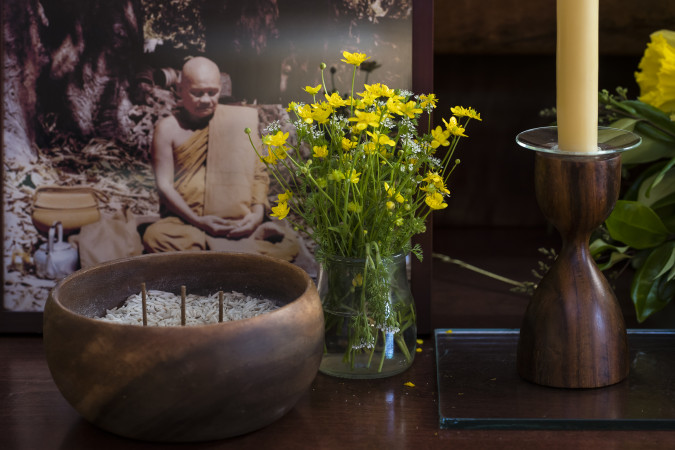The Brahman
Pāli Canon

At Sāvatthī. Then Ven. Ānanda early in the morning adjusted his under robe and—carrying his bowl & outer robes—went into Sāvatthī for alms. He saw the brahman Jāṇussoṇin leaving Sāvatthī in an all-white chariot drawn by mares. White were the yoked horses, white the ornaments, white the chariot, white the upholstery, white the reins, white the goad, white the canopy, white his turban, white his clothes, white his sandals, and with a white yak-tail fan he was fanned. Seeing him, people were saying, “What a sublime vehicle! What a sublime-looking vehicle!”
Then Ven. Ānanda, having gone for alms in Sāvatthī, after the meal, returning from his alms round, went to the Blessed One and, on arrival, having bowed down to him, sat to one side. As he was sitting there, he said to the Blessed One, “Just now, lord, early in the morning, I adjusted my under robe and—carrying my bowl & outer robes—went into Sāvatthī for alms.
I saw the brahman Jāṇussoṇin leaving Sāvatthī in an all-white chariot drawn by mares. White were the yoked horses, white the ornaments, white the chariot, white the upholstery, white the reins, white the goad, white the canopy, white his turban, white his clothes, white his sandals, and with a white yak-tail fan he was fanned. Seeing him, people were saying, ‘What a sublime vehicle! What a sublime-looking vehicle!’ Is it possible to designate a sublime vehicle in this Dhamma-Vinaya?”
“It is possible, Ānanda,” said the Blessed One. “That is a synonym for this very same noble eightfold path: ‘sublime vehicle,’ ‘Dhamma-vehicle,’ ‘unexcelled victory in battle.’”
“Right view, Ānanda, when developed & pursued, has the subduing of passion as its end-point, the subduing of aversion as its end-point, the subduing of delusion as its end-point.
“Right resolve… Right speech… Right action… Right livelihood… Right effort… Right mindfulness… Right concentration, when developed & pursued, has the subduing of passion as its end-point, the subduing of aversion as its end-point, the subduing of delusion as its end-point.
“It is by this sequence of reasons that one can know how that is a synonym for this very same noble eightfold path: ‘sublime vehicle,’ ‘Dhamma-vehicle,’ ‘unexcelled victory in battle.’”
That is what the Blessed One said. Having said that, the One Well-Gone, the Teacher, said further:
One with the qualities
of conviction & discernment
always yoked to its shaft,
shame its pole, the heart its yoke-tie,
mindfulness the protective charioteer,
virtue the chariot-accessories,
jhāna the axle, persistence the wheels,
equanimity the balance of the yoke,
hungerless-ness its upholstery,
non-ill will, harmlessness, & seclusion its weapons,
patience its armor & shield:
It rolls to security from bondage.
Coming into play
from within oneself:
the sublime vehicle unsurpassed.
They, the enlightened, leave the world.
They, absolutely, win victory.
This reflection is from the Pāli Canon, The Brahman, Brāhmaṇa Sutta (SN 45:4) and was translated into English by Ṭhānissaro Bhikkhu, (pdf) pp.416-418.












